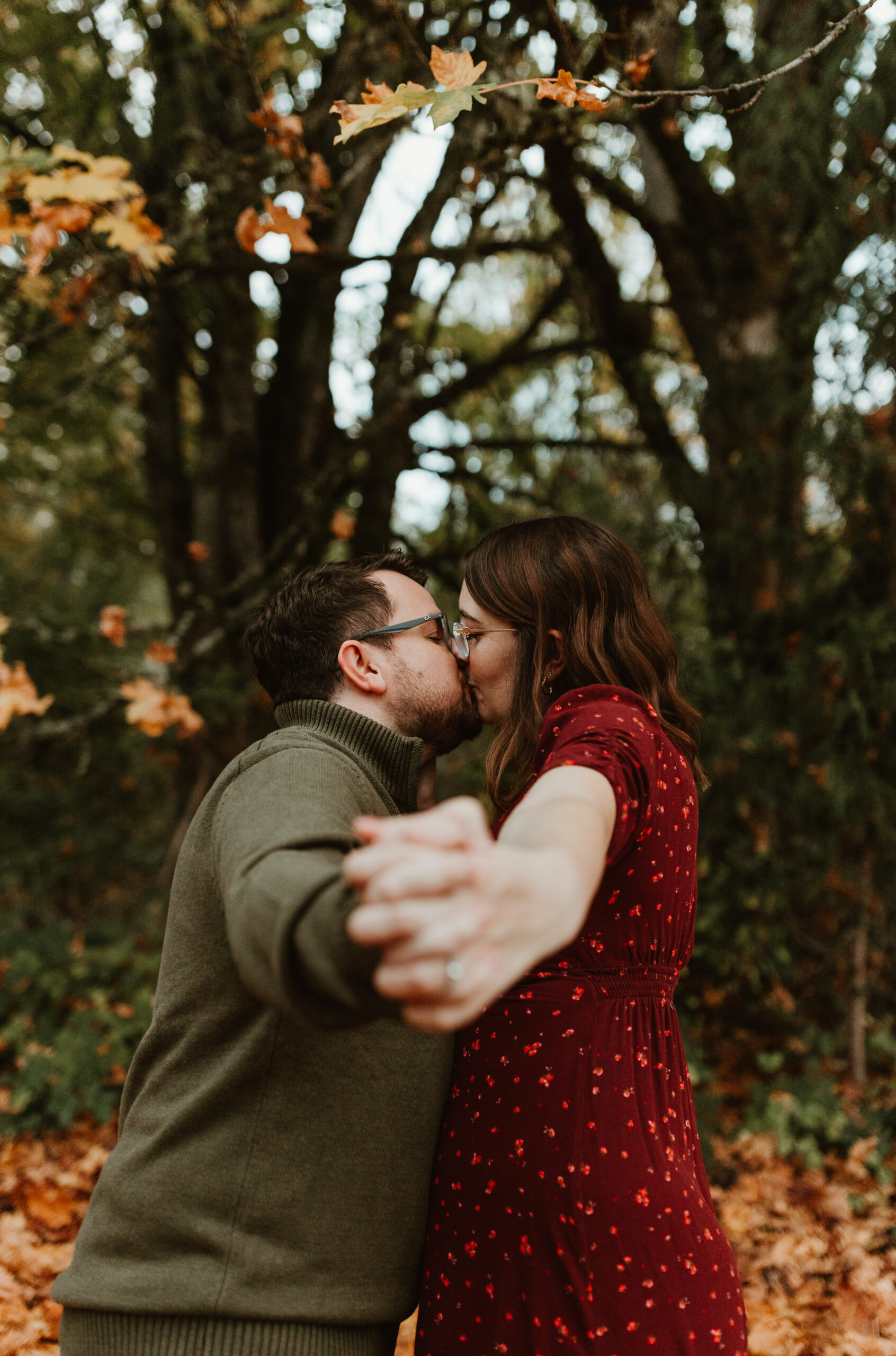Tristan and Andrew’s love story blossomed against the warm hues of fall foliage. As the leaves turned to shades of amber and crimson, this beautiful pair embarked on an autumnal engagement session.






Engagement Session Location Magic
The couple selected a charming woodland location bathed in the golden glow of autumn sunlight. Surrounded by towering trees and a carpet of fallen leaves, the setting created a dreamy atmosphere for their engagement session.




Wardrobe Choices for Your Fall Engagement Session
Tristan and Andrew’s wardrobe choices were a nod to the season’s warmth. Tristan donned a burgundy dress that complemented the fall hues, while Andrew opted for a classic sage green sweater. This created a perfect blend of cozy and elegant aesthetics.




Capturing Connection
Whether strolling hand in hand along a tree-lined path or sharing a quiet moment on a rustic bench, every image exuded the warmth and intimacy that Tristan and Andrew share. The laughter between Tristan and Andrew wasn’t just a soundtrack to their session; it was the essence of their connection. Genuine smiles, stolen glances, and playful nudges captured the unspoken language of a couple comfortable in each other’s company.






Tristan and Andrew’s fall engagement session was a testament to the beauty blossoming in harmony with nature’s changing seasons. As they embark on the journey towards marriage, we eagerly anticipate capturing more chapters of their love story. Fall is an amazing time to take engagement photos. The enchanting colors and diverse backdrop, make fall a wonderful scene for capturing the love and connection between couples in engagement photos. The season’s natural beauty complements the essence of romance, creating timeless images that tell a story of love in the midst of nature’s changing tapestry.
More About the Nisqually Wildlife Refuge
The Nisqually National Wildlife Refuge is a significant and picturesque natural area located in Nisqually, Washington. It is situated at the southern end of Puget Sound, covering approximately 3,000 acres of diverse habitats, including estuary, freshwater marsh, and riparian woodlands. The refuge is managed by the U.S. Fish and Wildlife Service and serves as a haven for a wide variety of plant and animal species.
Key features of the Nisqually Wildlife Refuge include:
Estuarine Ecosystem
The refuge is renowned for its estuarine ecosystem, where the freshwater of the Nisqually River meets the saltwater of Puget Sound. This unique blending of habitats creates an environment that supports an abundance of wildlife, including various species of fish, migratory birds, and invertebrates.
Birdwatching Paradise
Nisqually National Wildlife Refuge is a birdwatcher’s paradise, attracting bird enthusiasts from across the region. The refuge serves as a crucial stopover point for migratory birds along the Pacific Flyway. Visitors can observe a wide array of bird species, including eagles, herons, owls, and waterfowl.
Educational Opportunities
The refuge offers educational programs and interpretive exhibits to raise awareness about the importance of wildlife conservation and the delicate balance of ecosystems. Visitors can learn about the diverse flora and fauna that call the refuge home, as well as the ongoing conservation efforts to protect and preserve this valuable natural resource.
Hiking Trails and Boardwalks
Nisqually Wildlife Refuge provides visitors with the opportunity to explore its natural beauty through a network of well-maintained hiking trails and boardwalks. These pathways offer stunning views of the surrounding landscapes and allow visitors to experience the tranquility of the refuge while observing wildlife in their natural habitats.
Conservation Initiatives
The refuge actively engages in conservation initiatives, habitat restoration, and research programs. Efforts are made to maintain the ecological balance of the estuarine environment and ensure the continued survival of native species.
Overall, the Nisqually National Wildlife Refuge stands as a testament to the importance of preserving natural habitats for future generations. It serves not only as a sanctuary for wildlife but also as a recreational and educational resource for the community, fostering a deeper understanding of the interconnectedness of ecosystems and the need for conservation.